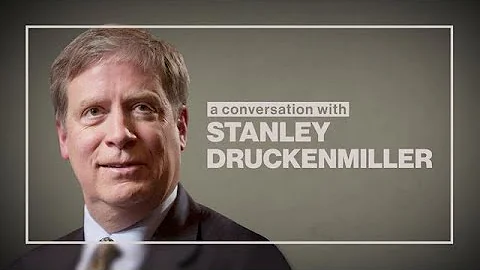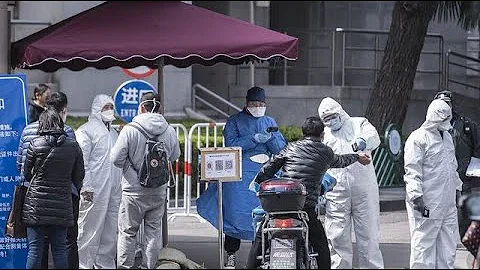US stocks are so awesome.
Although the number of people infected in the United States is nearly 2 million and the number of deaths exceeds 100,000 due to the epidemic, it still cannot prevent U.S. stocks from continuing to hit new highs.
Judging from the circuit breaker bottom in March, the Dow Jones Index has continued to hit new highs, while the Nasdaq has been even more ferocious, directly setting a new record high again, with a cumulative increase of 10% this year.
Is the rise in the U.S. stock market confusing? Why can the stock market of the country most affected by the global epidemic continue to rise?
Trump, who likes to tweet, started to babble again and directly said on social networks that today is a big day for the stock market.
The Dow rose 400 points
The Nasdaq hit a new high
Other people’s stock markets, US stocks rose again last night! Nasdaq hit a record high.
U.S. stocks rose on Monday, after rising sharply in the week on optimism about economic reopening. All three major stock indexes rose more than 1%. The Dow closed up 1.7%, the Nasdaq closed up 1.13%, and the S&P closed up 1.20%.
It is worth mentioning that Nasdaq broke through 9900 points for the first time in history and rose to a maximum of 9927.13 points, setting a new intraday high. It has risen by more than 10.6% this year! The Dow Jones Index has risen nearly 50% from the circuit breaker bottom, and the S&P 500 is less than 5% away from its all-time high.



Stanley Druckenmiller, chairman and CEO of Duquesne Family Office, said: "It's clear that the excitement about reopening has allowed many companies that have been hit hard by the COVID-19 event to get back on their feet. With funds from the Federal Reserve, especially vaccines, The news on this is very, very good."
"I've been humiliated many times in my career and I'm sure I will be humiliated many times in the future and the past three weeks certainly fit that criteria," the legendary hedge said. the fund manager added. He admitted that he missed the rally by underestimating the Fed.
An unexpected surge in U.S. non-farm payroll employment also pushed Wall Street stocks higher. The U.S. Department of Labor said on Friday that 2.5 million new jobs were created in May, a record high. Economists surveyed by Dow Jones had expected a drop of more than 8 million.
Jasper Lawler, director of research at London Capital Group, said the explosive non-farm payrolls report has led economists to talk about a V-shaped recovery. Meanwhile, the market has been moving into a V-shaped reversal. The record-high Nasdaq index of U.S. stocks was shocking, but since it broke above the 200-day moving average, it seems unstoppable.
Goldman Sachs economists led by Jan Hatzius said: "Nonfarm payrolls unexpectedly rebounded by 2.5 million in May, and the details in the report are consistent with a large and material rebound in labor market activity. The unemployment rate increased from April fell to 13.3% in May, well below expectations, but the Bureau of Labor Statistics misclassified workers who were employed but not at work, and the adjusted unemployment rate remained as high as 16.4% in April. ”
Goldman Sachs economists said: “It is encouraging that three-quarters of those who lost their jobs due to the coronavirus epidemic in May were only temporarily laid off, these signs point to a strong labor market recovery ahead. . We expect the unemployment rate to fall further in June."
Still, some economists believe that the unexpectedly strong rebound in the labor market shown in the jobs report may prevent lawmakers from pursuing further economic stimulus measures. Others also pointed out that the hundreds of billions of dollars released by the Paycheck Protection Program passed by Congress in May may lead to an overestimation of the number of workers returning to employment, and another wave of layoffs will be imminent once the program's funds are exhausted.
The Pentagon has just announced a decision.
On June 8, local time, the Pentagon announced the lifting of the travel ban on 5 countries around the world and 39 states in the United States. Five of them are Bahrain, Belgium, Germany, Japan and the United Kingdom.
The Pentagon said that the 44 countries and the United States have "qualified to lift travel restrictions." States in the U.S. that are not yet eligible to lift travel restrictions include California, Florida and North Carolina.
Trump: Today is a big day for the stock market
Seeing that U.S. stocks continue to regain lost ground, Trump began to tweet again. The latest tweet said that today is a big day for the stock market. Smart money and the world know that we are heading towards Moving in the right direction, jobs are coming back quickly.

In addition, Trump also expressed his views on the ongoing protests. He pointed out, "This year has been the lowest crime rate on record in the United States, and now the radical left Democrats want to defund and abandon the police. Sorry, I want law and order!"

Fed expands "Main Street" Rescue plan
lowers minimum loan amount to $250,000
html According to news on June 9, the Federal Reserve announced on Monday the expansion of the "Main Street" rescue plan, saying that it had relaxed the terms to allow more companies to participate.The Federal Reserve said on Monday that it would lower the initial minimum loan amount, increase the maximum amount that can be borrowed, and extend the loan repayment period to five years. The program is part of the Fed's effort to provide relief to small businesses during the economic downturn caused by the coronavirus pandemic.
According to the new guidelines, the current minimum loan amount for ordinary enterprises has been reduced from the previous US$500,000 to US$250,000. The maximum loan amount will vary by enterprise, but may increase from the previous US$200 million to US$300 million.
The Federal Reserve says its "Main Street" program for qualified lenders will open soon. "Supporting small and medium-sized businesses to prepare them to reopen and hire workers will help promote a broad economic recovery," Fed Chairman Jerome Powell said in Monday's announcement. "I believe the changes we are making will Improving the program's ability to support employment during this difficult time."
In addition to changing the size of the loan, the Fed also extended the repayment period from four to five years and adjusted the principal repayment schedule to two years from the previous one. start later.
The Federal Reserve also stated that it is working on introducing a rescue plan for non-profit organizations.
Allianz’s chief economic adviser:
“Uneasy” about the continued “significant recovery” in the market
Allianz’s chief economic adviser Mohamed El-Erian said on Monday that he was “uneasy” about the continued “significant recovery” in the stock market. , saying he was unwilling to bet on the latest round of market gains.
El-Erian said: "For me personally, continuing to bet on a huge market recovery is an uncomfortable option. I don't like doing it. But I respect and admire those who can do it."
With the United States As states gradually reopen, Wall Street continues to bet on the U.S. economic recovery. New York City entered the first phase of its reopening plan on Monday, which will allow more businesses to resume operations, including construction, manufacturing and curbside pickup retail.
El-Erian said the decision whether to buy in the current strong market depends on the many factors facing each investor and their tolerance for risk. "I must emphasize that this is a very personal choice."
Stimulated by the Federal Reserve's large-scale monetary policies, including unlimited asset purchases and near-zero interest rates, a large amount of money has also continued to pour into the stock market. The Federal Reserve will begin its two-day June interest rate meeting on Tuesday. The market currently generally expects the Federal Reserve to keep interest rates unchanged at near zero, not launch new stimulus policies or tools, and may reiterate its reservations about negative interest rates.
Why can US stocks keep rising?
Faced with the recent strong rise in the US stock market, many people have begun to lament that the US stock market has been seriously out of touch with the real economy and the American public, to an incredible extent.
Actually this answer can be described with a picture.

The "Wall Street Journal" published an article pointing out that this view is probably just derived from a wrong impression.
After hitting bottom on March 23, the S&P 500 Index has risen by more than 40%. Data from the Dow Jones Index shows that the last time such a high return broke out in such a short period of time dates back to 1933. Including dividends, the S&P 500 has lost less than 3% so far this year.However, at the same time, 108,000 Americans have died from the epidemic, 21 million people have lost their jobs, and society has fallen into general turmoil.
However, in fact, this disconnect is not as extreme as it seems. Beneath the surface, much of the stock market is suffering. Most stocks have fallen since the beginning of the year, and many of them have fallen by 20% or more. Only a few winners achieved extremely huge gains, giving people the illusion that losses were minimal at the overall level. In other words, the market's irrational exuberance is far less intense than it seems at first glance.
It is true that from a historical perspective, the U.S. stock market as a whole is far from cheap now, but the market is not selectively blind to the terrible situation around it.
Zoom Video Communications is up 209% so far this year, Regeneron Pharmaceuticals is up 59%, and Amazon is up 33%. However, at the same time, many industries are under severe impact - the aviation sector is down 52% so far this year, the banking sector is down 33%, the energy sector is down 32%, the automobile sector is down 30%, and the consumer finance sector is down 27%. Even the utilities sector, considered the most weather-resistant, fell 5%.
Of course, the stock market's split into a few super winners and a majority of losers is nothing new from a historical perspective. For example, in 1973, a few market darlings achieved record valuations while most stocks fell sharply. In 1999, the stock prices of many companies fell sharply. Warren Buffett's Berkshire Hathaway also fell by 20%, but the technology sector rose by as much as 80%.
However, the exaggerated degree of the gap between winners and losers has indeed reached a level unprecedented in history. For example, in the first five months of the year, large-cap growth stocks were up 6.1%, while smaller, lower-priced "value" stocks were down 25.6%. Data from Philadelphia investment firm AJO show that the performance gap between the two in these months has set a record for the second largest period in the same period since 1986, second only to 1999.
Drew Dickson, chief investment officer of Albert Bridge Capital in London, pointed out that as of June 3, the 50 largest stocks in the S&P 500 Index rose by an average of 11.3%, while at the same time, the 50 smallest stocks rose by 11.3%. The average decline was 16.8%.
"People are willing to pay even higher prices for stocks they have fallen in love with, and in turn are bidding lower and lower prices for stocks they don't like," Dixon commented. There is only one explanation for this special market phenomenon - this is a market ruled by fear. Everyone believes that only the stocks of high-quality companies with large scale and expensive stock prices are relatively safe. They want to do this for this reason. "We are willing to pay any price for security."
In fact, before the outbreak of the epidemic at the beginning of this year, the hard times of small stocks and value stocks had already begun, and investors accelerated their flight from these stocks during the subsequent epidemic and economic shock. Stocks, moving towards “safety” targets.
index rise ≠ general stock rise: mainly due to money printing
80% of stocks barely rise
Teacher Li Xunlei also published an analysis that individual stocks in the U.S. stock market are very divided, and the bull market mainly relies on the rise of large-market stocks.
For example, the Nasdaq index reached a new high, which is related to the fact that emerging industries are less affected by the epidemic. The largest increases are mainly concentrated in information technology, technology, medical and health and other fields. However, energy, aviation, hotels, tourism, etc. account for nearly 16% of the S&P 500 constituent stocks, and the overall overseas revenue of the S&P 500 constituent stocks accounts for as much as 40%. Obviously, they have been greatly affected by the epidemic, and the trend is not as good as Nasdaq Index.
Moreover, the stock market differentiation in the U.S. stock market is very serious, and the bull market mainly relies on the rise of large-capitalization stocks. From the end of 2008 to the end of 2019, among the more than 2,800 listed companies on Nasdaq, the median stock rose by only 33%, while the top 10% of stocks with the largest gains increased by an average of 19.6 times. The market value of more than 280 companies included The sum accounts for 50% of the total market capitalization.
Therefore, we cannot evaluate U.S. stocks with the same thinking as evaluating the A-share index, especially the Shanghai Composite Index as the judgment standard, because the Shanghai Composite Index is an index in which all samples are weighted according to market capitalization. This index compilation method has been used in European and American stock markets. "Extinct". There are few A-share stocks that have been delisted, but U.S. stocks always have a large proportion of the fittest. The cumulative number of delisted stocks on the Nasdaq market is more than 4,000. Therefore, from the perspective of delisting, the long-term bullishness of U.S. stocks also makes sense.
In addition, I believe that this strong rebound in US stocks has a lot to do with the huge amount of money printing. The latest data cited by Reuters shows that the U.S. Treasury Department and the Federal Reserve have announced a total of $13 trillion in liquidity and government deficits in just 25 working days. When these growing data are accumulated, it is found that borrowing money this year has The total will exceed the sum of the past five years.
At present, the Fed’s balance sheet expansion has reached 7.3 trillion US dollars. However, this is only the beginning of the Fed’s most radical expansion, and it plans to print another French GDP (2.7 trillion US dollars) in the next six weeks. , which also means that its balance sheet will reach $10 trillion by the end of 2020. The U.S. Treasury Department has also conducted large-scale bond issuance, and it is estimated that this year's fiscal deficit rate will hit a new high since the end of World War II.
The United States is printing money on such a large scale, but it cannot bring about an increase in commodity prices. Especially since April, the prices of bulk commodities and optional consumer goods have not increased. It can be seen that the real economic demand is insufficient, and a large amount of money has gone to the capital market, triggering the stock market Strong rebound.
Come on A shares!
This article comes from China Fund News





















